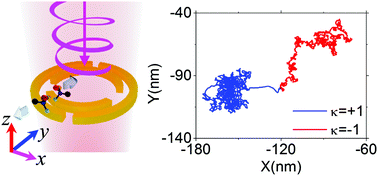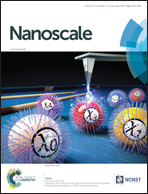Lateral sorting of chiral nanoparticles using Fano-enhanced chiral force in visible region†
Abstract
Chiral gradient force allows a passive separation of an enantiomer since its direction is dependent on the handedness of its chiral entities. However, chiral polarisability is much weaker than electric polarisability. As a consequence, the non-chiral gradient force dominates over chiral force, which makes enantioselective sorting challenging. We present here, both numerically and analytically, that the chiral gradient force acting on chiral nanoparticles can overcome the non-chiral force when specimens are placed in a Fano-enhanced chiral gradient near-field using a plasmonic nanoaperture. Under circularly polarized light illumination, the interaction between the resonant modes of symmetric outer and asymmetric inner Au split-rings results in a splitting of the modal energies, which excites multipolar interference Fano resonances (FRs). This enables a local aperture between the two split-rings to possess very large optical chirality gradients while maintaining low gradients of electromagnetic energy density around the FRs from the visible region. By way of the lateral resultant force composed of both chiral and non-chiral gradient forces, we can accomplish a helicity-dependent transverse deflection of the chiral nanoparticles positioned above the aperture, which may offer a good platform for all-optical enantiopure compounds.



 Please wait while we load your content...
Please wait while we load your content...